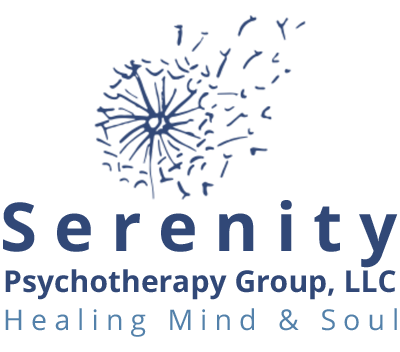Understanding Negative Relationship Patterns
All couples experience conflict, but unhealthy patterns can emerge that damage intimacy and trust over time. Common negative patterns include criticism, contempt, defensiveness, and stonewalling.
Criticism involves attacking your partner’s personality or character, rather than expressing a specific complaint about their behavior. Phrases like “you always” or “you never” often signal criticism. Contempt goes a step further, conveying disgust and a lack of respect. Mockery, hostile humor, name-calling, eye-rolling, and other dismissive gestures exhibit contempt.
Defensiveness emerges when one partner feels unjustly accused. They deny responsibility and blame their partner instead. Defensiveness might involve making excuses, becoming hostile, or dismissing complaints entirely. Stonewalling occurs when someone withdraws from the interaction, shutting down and refusing to engage.
These patterns develop over time, often unconsciously. As conflicts repeat, partners respond in predictable ways that form a cycle. One partner criticizes, the other becomes defensive, so the first ups the ante with contempt, causing the second to stonewall. The cycle continues to spiral.
When allowed to persist, negative patterns erode trust, intimacy, and connection. Partners feel disrespected, unheard, and resentful. Emotional wounds deepen when conflicts go unresolved. Partners stop believing in each other’s positive intentions and may come to view the relationship in a negative light overall.
Couples Counseling and Therapy as a Tool for Change

Couples counseling provides a safe space for couples to identify and address the negative patterns in their relationship with the guidance of a trained therapist. Through counseling, couples can gain insight into their destructive cycles of conflict and learn new skills to improve communication and foster greater connection.
Identifying Negative Patterns with a Therapist
A skilled couples counselor can help identify the negative interaction patterns that have developed between partners. For example, one common pattern is the “criticize-defend” cycle where one partner criticizes while the other gets defensive. The therapist helps the couple become aware of their tendencies around conflict.
Communication Skills Training
Poor communication is at the root of many negative relationship patterns. Couples counseling equips partners with practical communication tools to express feelings and needs constructively. Partners learn active listening, how to speak non-defensively, and how to validate each other. New communication habits replace previous destructive exchanges.
Conflict Resolution Strategies
Couples therapy provides strategies to de-escalate conflicts and resolve disagreements in a healthier way. Partners learn conflict management techniques to avoid situations spiraling into arguments. Counseling empowers couples to negotiate solutions cooperatively.
Addressing Underlying Issues
In addition to teaching new skills, couples counseling also explores the underlying emotions, needs and wounds contributing to negative patterns. Partners examine core issues like intimacy problems, childhood baggage, or power struggles. By addressing these root causes, patterns lose their intensity.
Building Intimacy and Connection
Reconnecting is a key focus in couples therapy. Counseling cultivates more empathy, vulnerability and emotional availability between partners. Couples engage in bonding exercises that foster greater friendship, passion and support. Healing negative patterns paves the way for more closeness.
Theories Used in Couples Therapy for Breaking Negative Patterns
There are several therapeutic approaches commonly used in couples counseling to help identify and change negative relationship patterns.
Gottman Method
The Gottman Method was developed by renowned relationship researcher John Gottman. It focuses on identifying negative communication styles and interactions that can predict relationship problems. Therapists help couples become aware of these destructive patterns, like criticism, contempt, defensiveness, and stonewalling. They teach specific skills to improve communication, manage conflict, and increase intimacy. The goal is to break the cycle of negativity by adopting a culture of appreciation, respect, and empathy in the relationship.
Emotionally Focused Therapy
Emotionally Focused Therapy (EFT) views negative patterns as a response to attachment needs not being met between partners. Therapists help couples identify their negative cycle and the emotions driving each person’s reactions. Partners learn to reprocess emotions and interactions to create secure attachment bonds. EFT aims to expand emotional responses and shape new interaction patterns of trust, reliance, and accessibility between partners.
Imago Relationship Therapy
Imago Relationship Therapy is based on the idea that negative patterns arise from unconscious images of love formed in childhood. Therapists have couples dialogue to identify core issues and unmet needs driving their conflicts. Partners learn new communication skills to send, receive and understand each other’s messages accurately. A structured process is used to promote empathy, validation, and mirroring between partners to transform conflict into healing.
Cognitive Behavioral Therapy
Cognitive Behavioral Therapy (CBT) focuses on how each partner’s thoughts, beliefs and attitudes affect their behaviors and interactions. Therapists teach couples how to identify and change dysfunctional thinking patterns that lead to negative relationship cycles. Partners learn to monitor automatic thoughts, modify cognitive distortions, and communicate in a mindful, emotionally intelligent way. The goal is to create new patterns of thinking and behaving that support the health of the relationship.
The Role of Each Partner in Breaking the Cycle
For couples therapy to be successful in breaking negative patterns, both partners need to be fully committed to the process of change. The old saying “it takes two to tango” certainly applies here.
Commitment to Change
Each partner must demonstrate a genuine commitment to change by being open to looking critically at their own behaviors and contributions to the negative patterns. They need to let go of blaming their partner and take responsibility for their part. This requires motivation to improve the relationship and willingness to work hard in therapy.
Accountability for Individual Behaviors
In addition to commitment, each partner must take accountability for their problematic behaviors that perpetuate the negative patterns. For example, stonewalling during conflict, avoiding intimacy, criticism or contempt. The partner engaging in these behaviors needs to acknowledge their role, even if unintended, in causing damage to the relationship.
Willingness to be Vulnerable and Honest
Partners must also show willingness to be vulnerable and have honest discussions with each other about difficult topics. This means openly sharing feelings, thoughts and desires without fear of judgment. Partners should strive to validate each other’s experiences and make each other feel safe. Suppressing emotions or being defensive will hinder progress.
Setting Realistic Expectations and Goals for Therapy
Finally, couples must set realistic expectations about the scope and pace of change. Breaking entrenched patterns takes time and conscious effort. Progress may feel slow or incremental. Partners should actively discuss their goals for therapy and identify small wins. Celebrating small positive changes can boost motivation to keep working at it.
Benefits of Breaking Negative Patterns
Breaking negative relationship patterns can lead to many benefits for couples. Here are some of the key advantages:
Improved Communication and Conflict Resolution
When couples address their negative patterns in therapy, they learn new communication techniques to better express their feelings and needs. This allows them to avoid destructive arguments and have more productive discussions. They gain conflict resolution skills to tackle disagreements before they spiral out of control. With improved communication, couples are able to understand each other’s perspectives better.
Increased Emotional Intimacy and Connection
Negative patterns create distance between partners. By breaking these cycles, couples are able to become more emotionally intimate again. They feel safe being vulnerable and sharing their innermost thoughts and feelings. This builds trust and strengthens their bond. Partners feel more loved, supported and connected.
Greater Empathy and Understanding for Each Other
Therapy helps couples develop greater empathy and insight into their partner’s behaviors. They are able to understand the underlying reasons behind the negative patterns, which often stem from childhood wounds or other personal struggles. With more empathy, couples are able to be less critical and more accepting of each other.
Stronger and More Fulfilling Relationship
Ultimately, breaking negative patterns leads couples to a healthier, more satisfying relationship. They are able to spend quality time together, have fun, and appreciate each other again. The relationship becomes a source of comfort and joy rather than resentment. Couples feel more committed to nurturing their partnership. They have the skills to overcome future challenges in a constructive way.
Breaking the Patterns: Real Life Examples
Overcoming Criticism
John and Emma had been together for over 10 years but a pattern of criticism had crept into their relationship. Emma would constantly criticize John for not doing chores properly or forgetting things. This made John feel inadequate and he would withdraw.
In counseling, they learned Emma’s criticism came from feeling overwhelmed and wanting more help. But it made John feel attacked. The counselor helped Emma express her needs positively. She asked for help with specifics. John felt less criticized and became more willing to pitch in. Emma had to catch herself when reverting to criticism and reframe requests. It took practice but breaking the criticism cycle brought them closer.
Learning to Communicate
Mike and Sue struggled to communicate without arguing. Small issues escalated into major fights. Counseling taught them skills like taking breaks when escalated, using “I feel” statements, and repeating each other’s viewpoint.
At first, putting these into practice felt unnatural. But they kept trying and improved. Now when arguments start, they take a break and regroup. Mike says: “When I hear you say I don’t care about your feelings, I feel sad because I do care but may not show it well.” Sue responds: “You’re right, I know you care but it hurts when you dismiss my worries.” This empathy diffuses tension. Their communication is better than ever.
Rebuilding Trust
When Steve had an affair, Lucy felt utterly betrayed. Steve ended things and recommitted but Lucy struggled to trust him again. Small triggers like Steve texting or being late from work caused anxiety for Lucy.
Counseling helped Steve rebuild trust by being accountable. He shared passwords, his schedule, and checked in frequently to reassure Lucy. Lucy worked on expressing her feelings versus bottling them up and then exploding later. As Steve proved his loyalty over time, Lucy’s triggers eased. She regained confidence in Steve and they felt closer than before the breach. Their vulnerability and honesty with each other was key to overcoming the broken trust.
Tips for Identifying Your Relationship Patterns
Pay close attention to what happens during conflicts between you and your partner. What are each of your typical reactions and roles? Do you get defensive while your partner attacks? Does one of you withdraw while the other pursues? Noticing these instinctive responses during heated moments can provide insight into the negative patterns in your relationship.
It’s also helpful to step back and examine any cycles or repeat issues in your partnership. Do you argue about the same topics over and over? Do you keep having conflicts around responsibilities like chores or finances? Recurring arguments are often a clue that you are stuck in an unhealthy pattern as a couple.
Think about your upbringings and how they may influence your reactions in the relationship. If you grew up in a household with a lot of conflict, you may fall into aggressive patterns more easily. If your family avoided difficult conversations, you might tend toward avoidance or defensiveness with your partner. Recognizing how your background shapes your responses can help you identify areas to work on.
Making a point to be aware of your interactions, especially during disagreements, is key to spotting unproductive patterns that you and partner get stuck in. Paying attention to the roles each of you fall into and looking for repeat issues allows you to pinpoint what patterns need to change in order to have a healthier, more fulfilling relationship. Examining your individual backgrounds can also shed light on where these patterns originated from.
Exercises and Activities to Try at Home
There are several exercises and activities couples can try at home to help identify and break negative relationship patterns:
Writing Down Conflicts to Examine Roles
- After a conflict, each partner should separately write down a detailed account of what happened. Include what led to the disagreement, how each person reacted, the roles each person took on, and how it made you feel. Then come together and compare notes. Look for themes in how conflicts tend to play out and the roles each person falls into.
Discussing Childhood Experiences
- Have an open discussion about each person’s family and childhood experiences relating to conflict, communication, and relationships. This can increase understanding about where certain reactions and patterns stem from.
Reading Relationship Books Together
- Read self-help books or relationship books together and discuss key ideas and how they apply to your partnership. Some good options are The Seven Principles for Making Marriage Work by John Gottman or Hold Me Tight by Sue Johnson.
Weekly Check-ins on Patterns
- Have a weekly check-in where you evaluate how well you did at being aware of and avoiding negative patterns that week. Discuss any instances where patterns emerged and brainstorm better ways to respond next time. This keeps patterns top of mind.
Trying exercises like these at home can help reveal ingrained patterns and give couples tools to communicate more mindfully. However, working with a trained couples counselor is recommended for making real breakthroughs in ending entrenched patterns.
When to Seek Professional Help
If you and your partner feel trapped in a cycle of negative patterns, it may be time to seek outside support. Here are some signs that professional counseling could help:
- Patterns are deeply entrenched. Despite your best efforts, you keep falling into the same destructive arguments and behaviors. You feel like you’re going in circles.
- Poor communication has built up. Fights often blow up over small issues because of pent-up hurt and resentment. You struggle to communicate without criticism or contempt.
- You feel stuck in the cycle. The same conflicts keep emerging over and over. Even if you have temporary peace, the issues resurface before long.
- Intimacy has declined significantly. You and your partner feel emotionally disconnected. There is little quality time together, affection, or physical intimacy.
A skilled couples counselor can provide tools to break negative patterns that feel impossible to change on your own. Therapy helps you address root causes in a safe environment and rebuild intimacy. Don’t wait until problems become severe. Seeking help early can nip issues in the bud before they damage the relationship further. With commitment from both partners, counseling offers hope for overcoming even long-standing patterns.
Finding the Right Couples Counselor
When seeking professional help for breaking negative relationship patterns, it’s important to find the right couples counselor who can meet your needs. Here are some tips:
- Look for experience working with couples and patterns: Find a counselor who specializes in couples therapy and has extensive experience working with relationship patterns. They’ll understand the dynamics and have tools to help.
- Consider therapy approaches used: Look for a counselor trained in evidence-based approaches designed for couples like Gottman Method, EFT, or Imago. Avoid counselors using generic talk therapy.
- Meet with the counselor first: Schedule an initial consultation to get a feel for their style and personality. Ensure you feel comfortable opening up to them as a couple.
- Look for specialized training: Seek a counselor with advanced training and credentials specific to couples counseling. A degree in marriage and family therapy demonstrates specialized expertise.
Taking the time to find an experienced couples therapist who uses proven techniques and with whom you have good rapport can make all the difference in being able to break entrenched patterns. With the right professional guidance tailored to your relationship, you’ll be on the path to better communication, greater intimacy, and a more fulfilling partnership.
Legal Considerations
Unmarried couples engaging in couples therapy have unique legal considerations compared to married couples. Since unmarried couples lack the legal recognition of marriage, the law treats them differently in areas like confidentiality and testimonial privileges.





